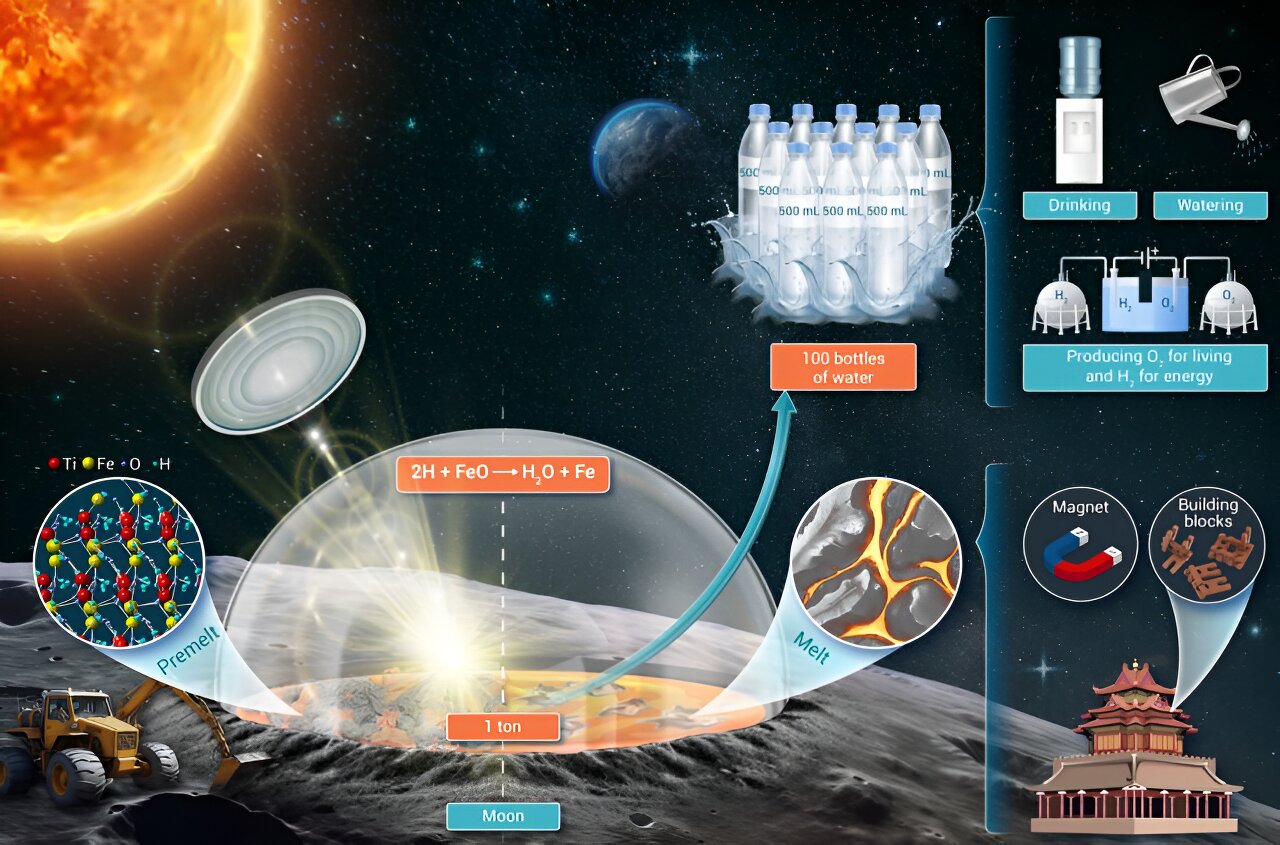Researchers have conducted experiments with lunar regolith and concluded that it is possible to extract much more water from it than previously thought. And this can be done by simply heating it.

Water in lunar regolith
Future colonization of the Moon is closely tied to the availability of water on it. The problem of providing astronauts with something to drink is usually reduced to ice reserves at the poles. However, a team of scientists from China’s Ningbo Institute of Materials Science and Engineering recently proved that the lunar regolith was enough to make it happen.
The fact that the top layer of rocks includes water has been known since the Apollo crew. And recent studies of Chinese apparatuses have confirmed this. And recent studies of Chinese apparatuses have confirmed this. However, the most important substance for life in regolith is very little — from 0.0001% to 0.02%.
However, as Chinese scientists have discovered, this is the case if only physicochemically bound matter is counted. If the hydrogen and oxygen in the minerals are released and combined together, there is much more water.
How much water can be extracted from a ton of regolith?
It has turned out that it is not so difficult to extract the hidden water. It is enough just to heat the regolith to 1200°C. These are exactly the kind of experiments that the authors of the new study were engaged in. They didn’t even need a powerful furnace or laser. All they needed was a system of concave mirrors that focused the sunlight.
It turned out that 51-76 mg of water can be obtained from one gram of regolith. It would seem that this is not much. However, if you take a ton of rock, you can get 50 liters from it. And this is enough for several people for more than one day.
Subsequent studies have shown that the rock ilmenite, which is also found in some places on the Moon, very often contains even more water in its composition. In general, research has shown that hydrogen within lunar rocks has great potential for utilization. It can not only supply water to people and plants, but can also be used as rocket fuel.
According to phys.org


